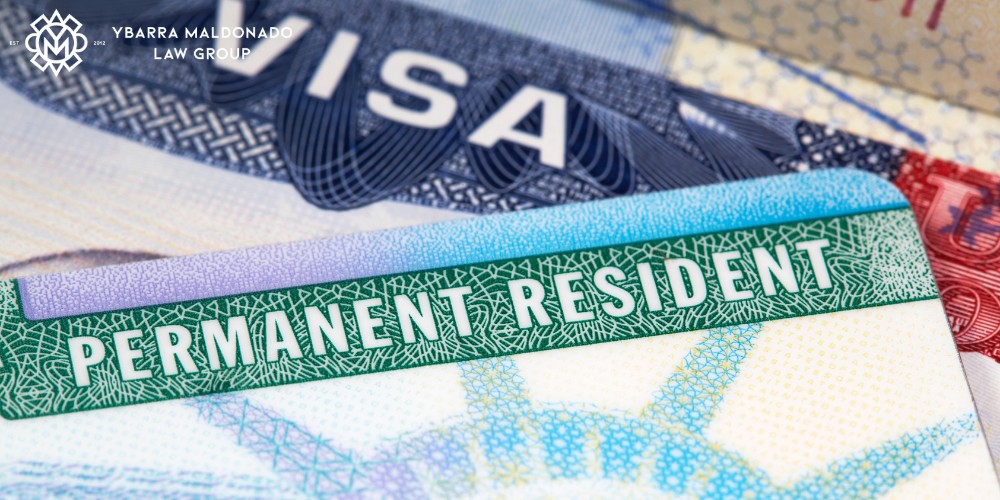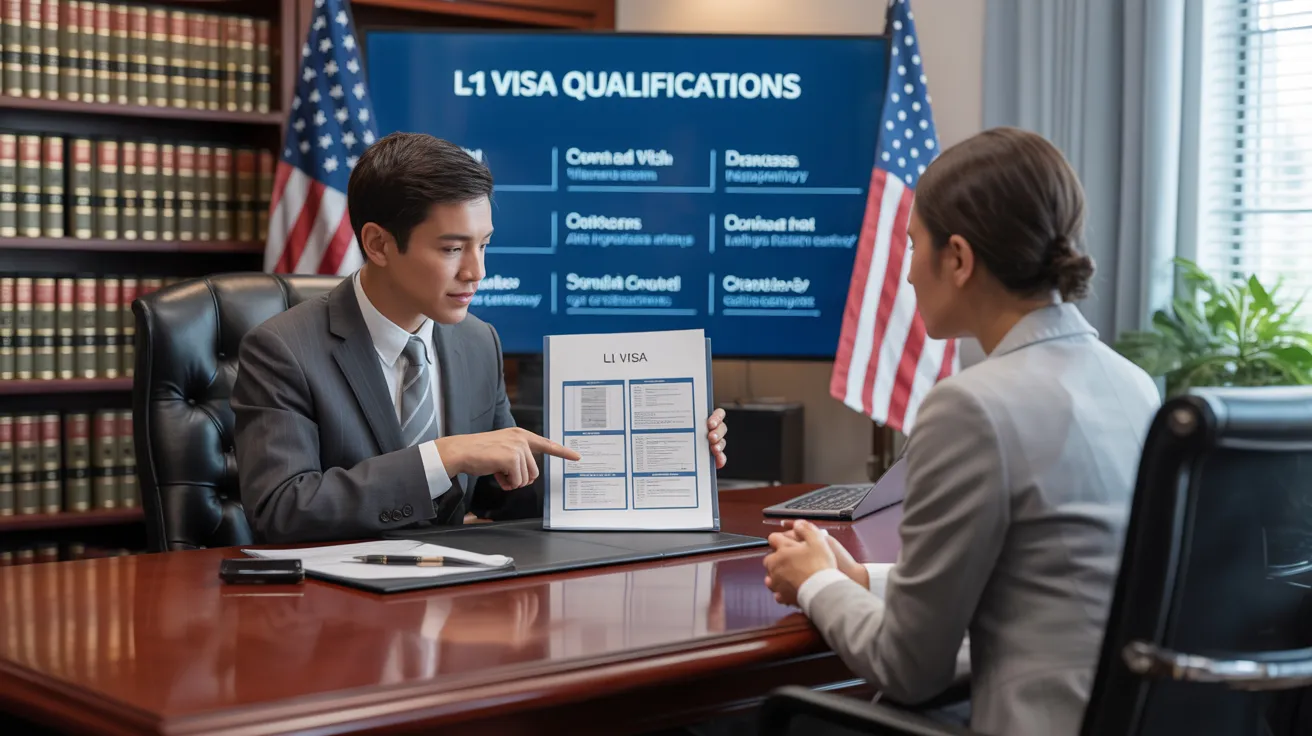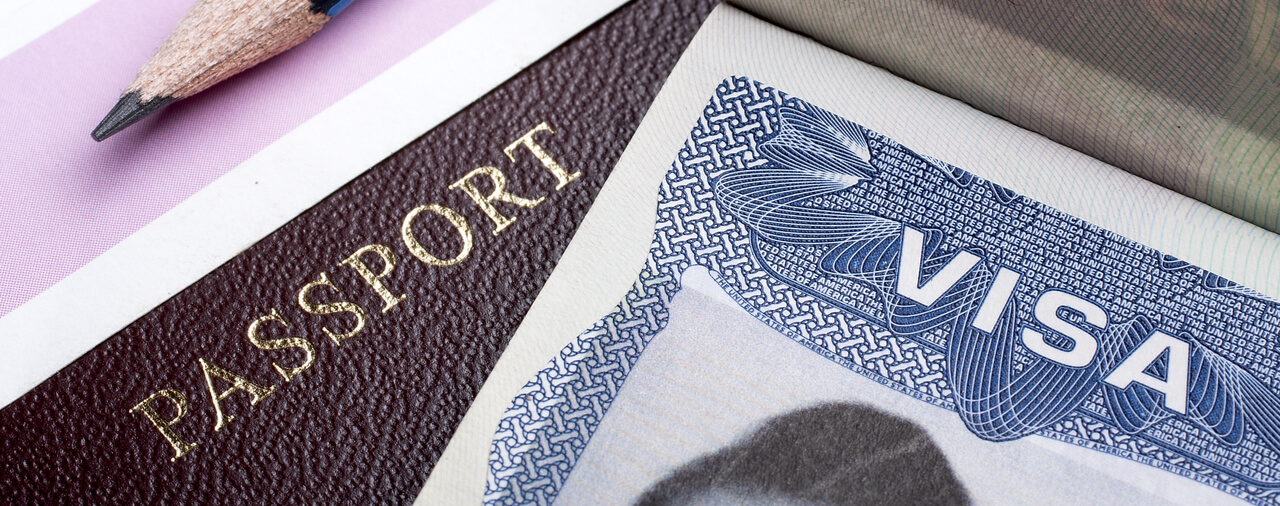Whatever You Need to Understand About the L1 Visa: Benefits, Needs, and Much more
The L1 Visa works as an important tool for international companies looking for to move staff members to the United States, helping with both operational efficiency and the transfer of specialized understanding. With distinctive classifications for executives and specialized professionals, this visa presents numerous advantages, consisting of possible paths to irreversible residency. Nevertheless, recognizing the qualification needs and application process is necessary for an effective change. As we check out the intricacies of the L1 Visa, it comes to be clear that steering its intricacies is extremely important for organizations intending to take advantage of international ability effectively. What difficulties might you come across along the way?
Summary of the L1 Visa

Sorts Of L1 Visas

Multiple kinds of L1 visas accommodate the diverse requirements of multinational firms aiming to transfer staff members to the USA. Both key groups of L1 visas are L1A and L1B, each made for certain duties and responsibilities within an organization. L1 Visa Requirements.The L1A visa is meant for supervisors and execs. This classification enables companies to transfer people that hold supervisory or executive settings, allowing them to supervise operations in the united state. This visa stands for a preliminary duration of as much as 3 years, with the opportunity of expansions for a total amount of up to seven years. The L1A visa is particularly beneficial for business seeking to develop a solid management presence in the U.S. market.On the other hand, the L1B visa is marked for employees with specialized expertise. This includes individuals who possess advanced know-how in certain areas, such as proprietary innovations or one-of-a-kind procedures within the firm. The L1B visa is also valid for an initial three-year duration, with extensions available for approximately five years. This visa category is optimal for companies that call for employees with specialized abilities to enhance their operations and keep an one-upmanship in the U.S.Both L1A and L1B visas enable for dual intent, indicating that visa owners can obtain permanent residency while on the visa. Understanding the differences between these 2 groups is essential for companies preparing to browse the complexities of employee transfers to the USA effectively
Eligibility Demands
To get an L1 visa, both the company and the employee have to satisfy details qualification requirements set by U.S. migration authorities. The L1 visa is made for intra-company transferees, enabling multinational firms to move employees to their U.S. offices.First, the employer has to be a certifying company, which suggests it needs to have a parent company, branch, subsidiary, or associate that is working both in the united state and in the foreign nation. This connection is important for showing that the employee is being moved within the exact same corporate structure. The employer needs to also have actually been doing organization for at least one year in both locations.Second, the staff member should have been utilized by the foreign business for a minimum of one constant year within the 3 years preceding the application. This work must remain in a supervisory, executive, or specialized knowledge ability. For L1A visas, which deal with managers and execs, the worker should demonstrate that they will certainly remain to run in a comparable ability in the united state For L1B visas, intended for staff members with specialized understanding, the individual must have special know-how that contributes substantially to the business's procedures.
Application Process
Navigating the application process for an L1 visa entails a number of crucial steps that need to be finished precisely to assure a successful end result. The primary step is to identify the ideal classification of the L1 visa: L1A for managers and executives, or L1B for employees with specialized knowledge. This difference is significant, as it impacts the documentation required.Once the group is determined, the U.S. employer must file Form I-129, Request for a Nonimmigrant Employee. This kind should consist of in-depth details regarding the firm, the employee's duty, and the nature of the job to be executed in the U.S. Accompanying documents typically consists of evidence of the partnership between the united state and international entities, evidence of the staff member's certifications, and info relating to the work offer.After entry, the united state Citizenship and Immigration Provider (USCIS) will examine the request. If accepted, the staff member will certainly be informed, and they can after that get the visa at a united state consular office or consular office in their home nation. This entails completing Type DS-160, the Online Nonimmigrant copyright, and scheduling an interview.During the meeting, the candidate has to offer various papers, including the accepted Kind I-129, evidence of work, and any kind of added sustaining proof. Adhering to the interview, if the visa is given, the staff member will certainly obtain a visa stamp in their ticket, permitting them to get in the U.S. to help the sponsoring employer. Appropriate prep work and complete documentation are vital to navigating this process effectively.
Advantages of the L1 Visa
Among the noteworthy benefits of the L1 visa is its capacity to assist in the transfer of vital employees from global offices to the United States. This visa is particularly advantageous for multinational firms looking for to keep consistency in procedures and management throughout borders. By permitting executives, managers, and specialized employees to operate in the united state, companies can guarantee that their most important ability is offered to drive business objectives.Another considerable advantage of the L1 visa is its reasonably straightforward application procedure contrasted to other job visas. Organizations can petition for the L1 visa without the need for a labor qualification, which enhances the employment of foreign workers. Furthermore, the visa can be granted for a first duration of approximately three years, with the possibility of expansions, assisting in lasting assignments.The L1 visa also offers a path to irreversible residency. Staff members on L1A visas (for supervisors and executives) can use for a copyright after one year, accelerating their change to long-term standing. This feature is an eye-catching incentive for skilled individuals looking for stability in the U.S. workforce.Additionally, L1 visa holders can bring their immediate relative to the united state under L2 condition, allowing spouses and youngsters to stay and research in the nation, improving the overall charm of this visa category. On the whole, the L1 visa acts as a necessary tool for international businesses, promoting cross-border cooperation and skill wheelchair.
Usual Obstacles
While the L1 visa uses many advantages for multinational firms and their workers, it is not without its difficulties. One significant hurdle is the strict documentation and eligibility requirements enforced by the united state Citizenship and Migration Solutions (USCIS) Companies need to give comprehensive evidence of the international worker's credentials, the nature of business, and the qualifying partnership in between the U.S. and international entities. This process can be lengthy and may need legal know-how to navigate successfully.Another challenge is the potential for analysis during the petition process. USCIS officers may question the authenticity of the service procedures or the worker's role within the company. This examination can lead to hold-ups and even rejections of the copyright, which can considerably impact the business's functional strategies and the employee's job trajectory.Furthermore, the L1 visa is connected to the funding employer, which suggests that job adjustments can complicate the visa status. If an L1 visa owner wants to switch over employers, they should frequently seek a various visa category, which can add intricacy to their migration journey.Lastly, maintaining compliance with L1 visa regulations is essential. Companies should ensure that their worker's function lines up with the initial request which the organization proceeds to meet the qualification needs. Failing to do so can cause abrogation of the visa, influencing both the employee and the company. These challenges demand detailed preparation and recurring monitoring to guarantee an effective L1 visa experience.
Tips for Success
To successfully browse the L1 visa procedure, meticulous prep work is essential. Begin by extensively understanding the details needs for the L1 visa classification you are looking for, whether L1A for supervisors and executives or L1B for workers with specialized expertise. Gather all essential documentation early while doing so, including proof of your work history, business structure, and the nature of business operations.Engage lawful advise experienced in migration regulation to assist you via the complexities of the application. An attorney can assist assure that your application is total, accurate, and engaging. They can likewise aid in planning for possible demands for evidence click here (RFEs) by proactively dealing with areas that may increase questions.Additionally, preserve clear interaction with your company, who should provide vital support for your application. L1 copyright copyright. Validate that they recognize their obligations, including submitting the required requests and offering documentation that corroborates your duty in the organization.Prepare for the visa meeting by exercising solution to typical inquiries regarding your specialist background and the nature of your work. Demonstrating confidence and quality can significantly affect the end result of your application
Frequently Asked Concerns
Can Household Members Accompany L1 Visa Holders?
Yes, family members can accompany L1 visa holders. Spouses and unmarried youngsters under 21 years of ages are qualified for L2 visas, which permit them to live and research in the USA during the L1 holder's keep.
How Long Can L1 Visa Holders Remain In the united state?
L1 visa holders can at first remain in the U.S. for up to three years (L1 Visa Requirements). This duration might be expanded, enabling a maximum keep of seven years for L1A visa holders and five years for L1B visa holders
Is the L1 Visa a Twin Intent Visa?

Can L1 Visa Owners Request a Permit?
Yes, L1 visa holders can use for a permit - L1 Visa Requirements. The L1 visa sustains double intent, allowing holders to seek long-term residency while preserving their non-immigrant condition, facilitating a smoother changeover to a permit
What Occurs if an L1 copyright Is Denied?
If an L1 copyright is refuted, the applicant may obtain a notice outlining the factors for rejection. L1 Visa Requirements. They can appeal the choice, reapply, or discover alternate visa choices depending on their conditions and qualifications
Verdict
In summary, the L1 Visa works as an important instrument for multinational firms looking for to move workers to the USA. Comprehending the distinctions between L1A and L1B categories, in addition to the eligibility requirements and application procedures, is essential for effective navigation of this non-immigrant classification. The benefits supplied, including structured applications and paths to permanent residency, further improve its appeal. Dealing with common challenges effectively can cause a more desirable result in the copyright process.